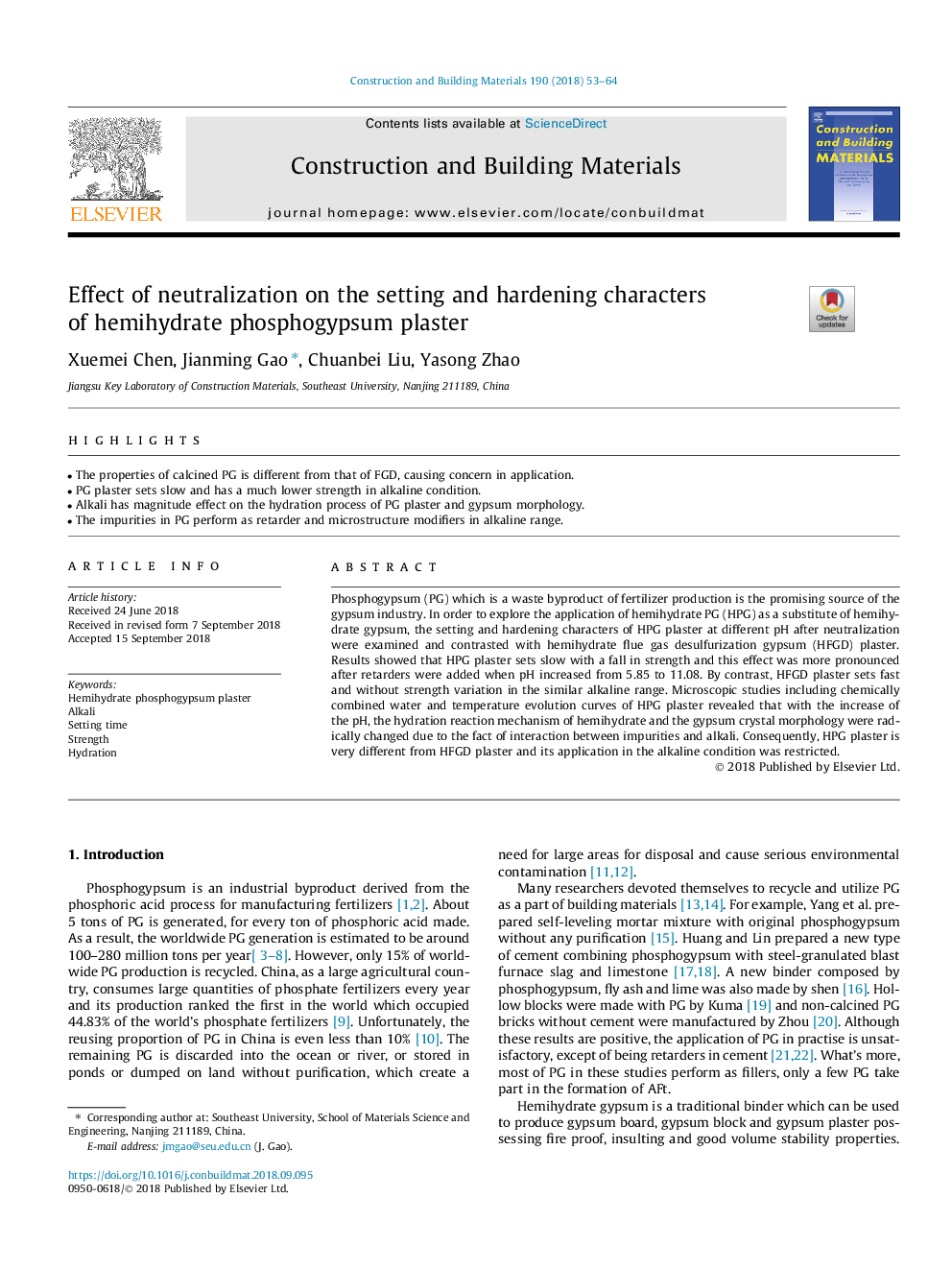| Article ID | Journal | Published Year | Pages | File Type |
|---|---|---|---|---|
| 10225311 | Construction and Building Materials | 2018 | 12 Pages |
Abstract
Phosphogypsum (PG) which is a waste byproduct of fertilizer production is the promising source of the gypsum industry. In order to explore the application of hemihydrate PG (HPG) as a substitute of hemihydrate gypsum, the setting and hardening characters of HPG plaster at different pH after neutralization were examined and contrasted with hemihydrate flue gas desulfurization gypsum (HFGD) plaster. Results showed that HPG plaster sets slow with a fall in strength and this effect was more pronounced after retarders were added when pH increased from 5.85 to 11.08. By contrast, HFGD plaster sets fast and without strength variation in the similar alkaline range. Microscopic studies including chemically combined water and temperature evolution curves of HPG plaster revealed that with the increase of the pH, the hydration reaction mechanism of hemihydrate and the gypsum crystal morphology were radically changed due to the fact of interaction between impurities and alkali. Consequently, HPG plaster is very different from HFGD plaster and its application in the alkaline condition was restricted.
Keywords
Related Topics
Physical Sciences and Engineering
Engineering
Civil and Structural Engineering
Authors
Xuemei Chen, Jianming Gao, Chuanbei Liu, Yasong Zhao,
